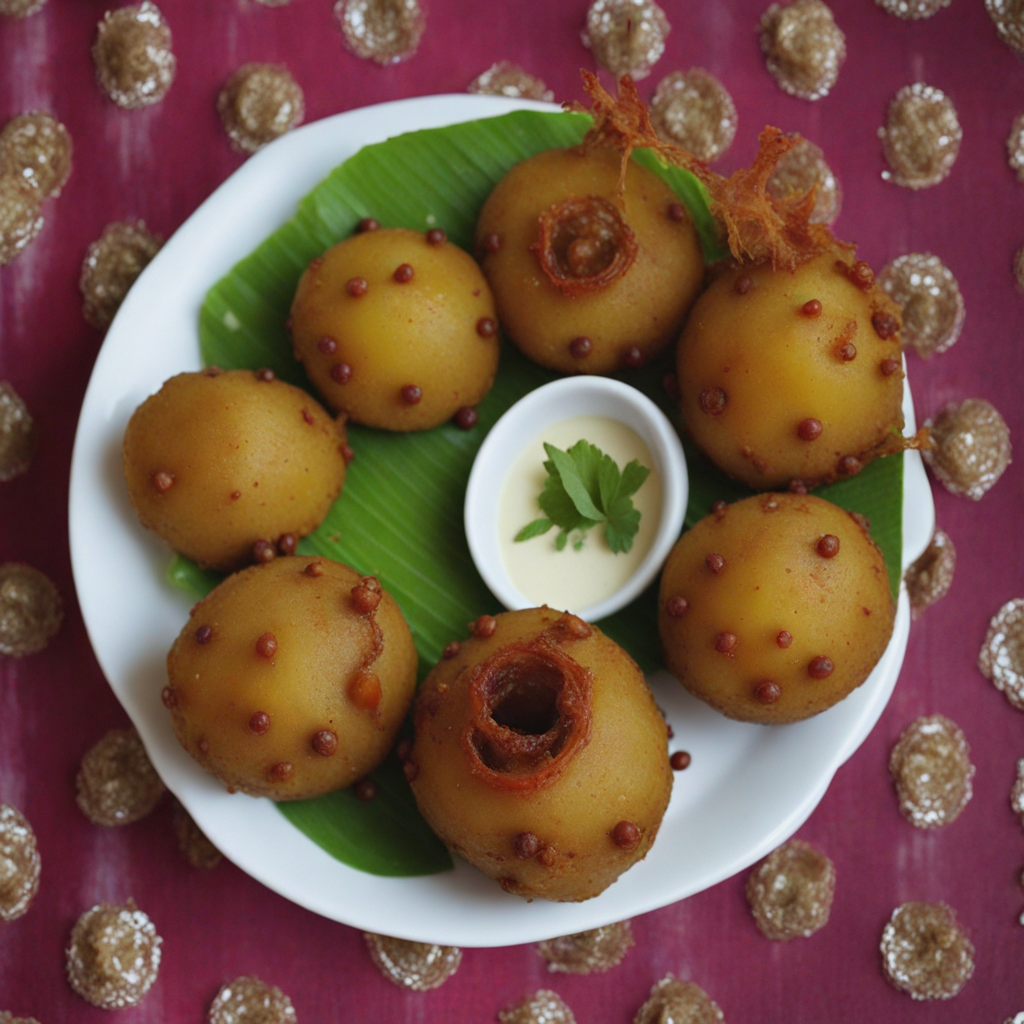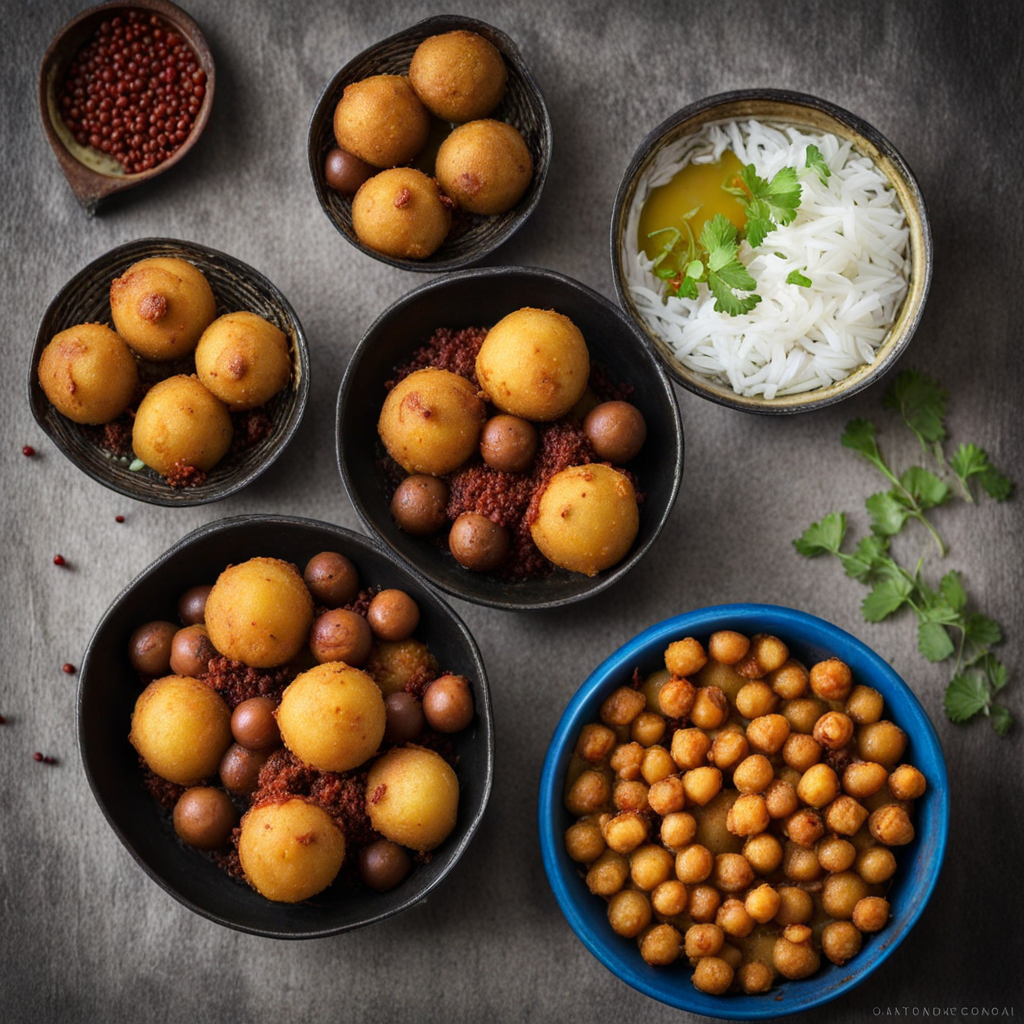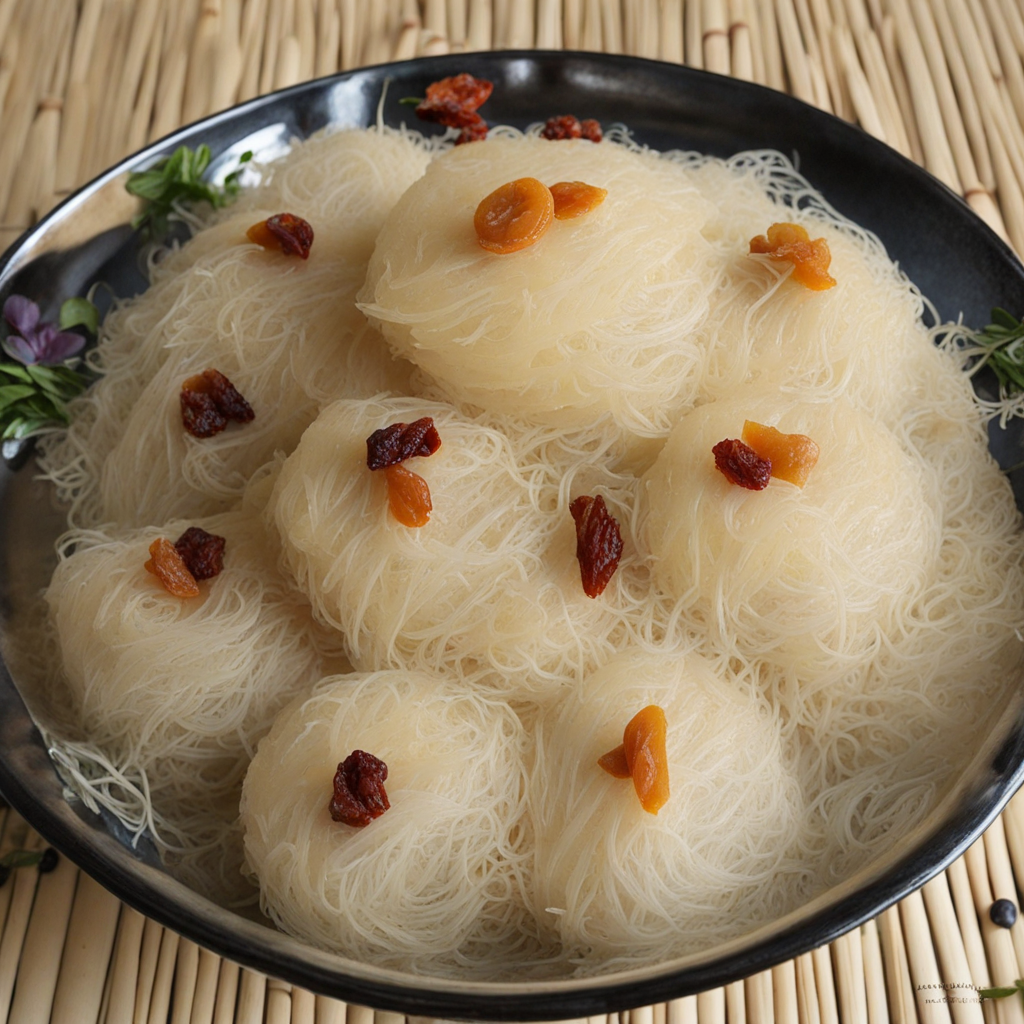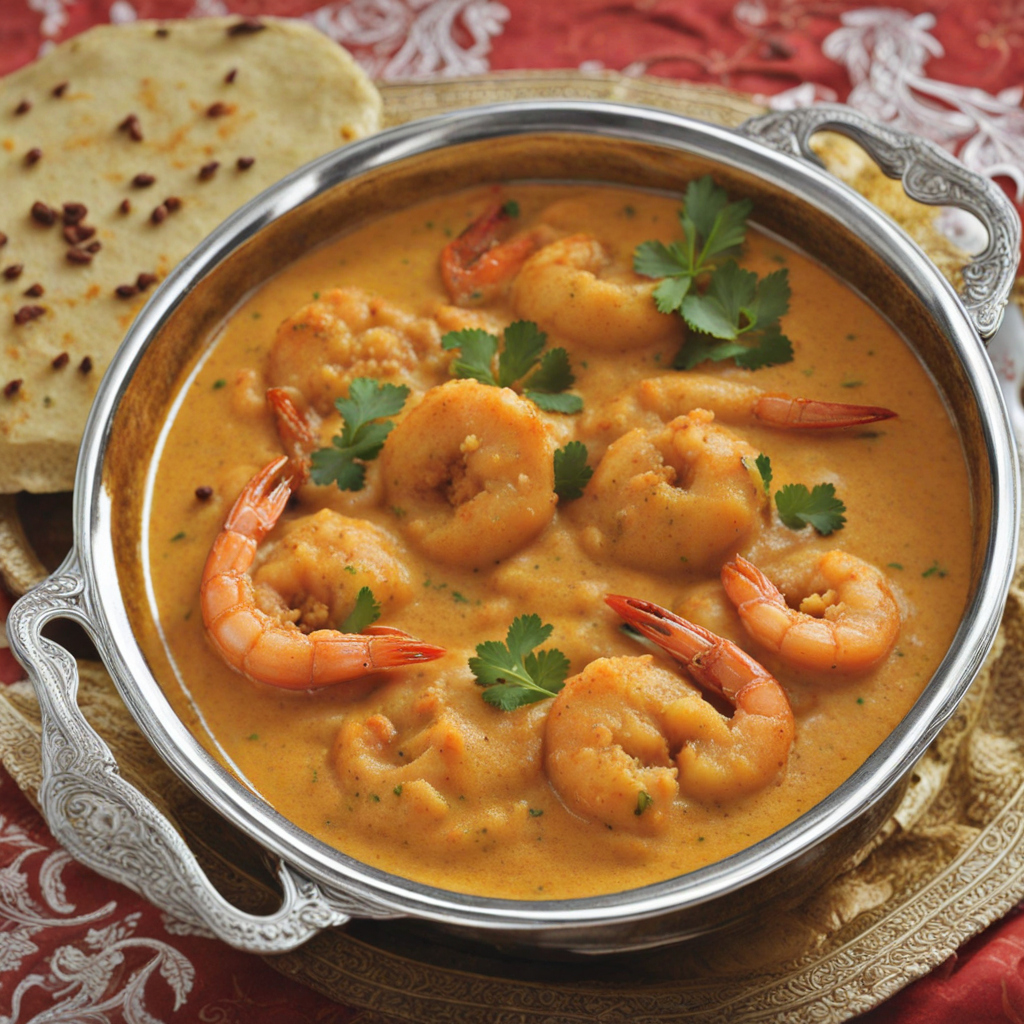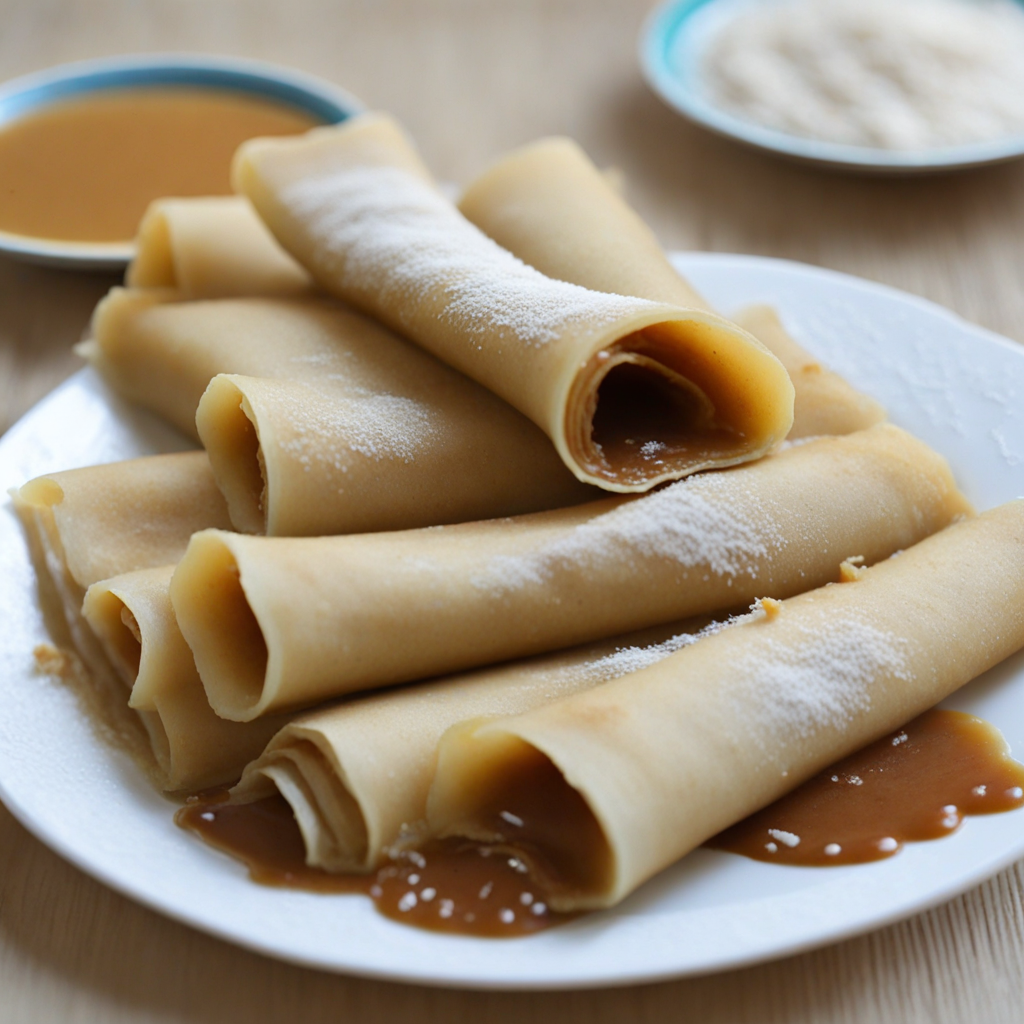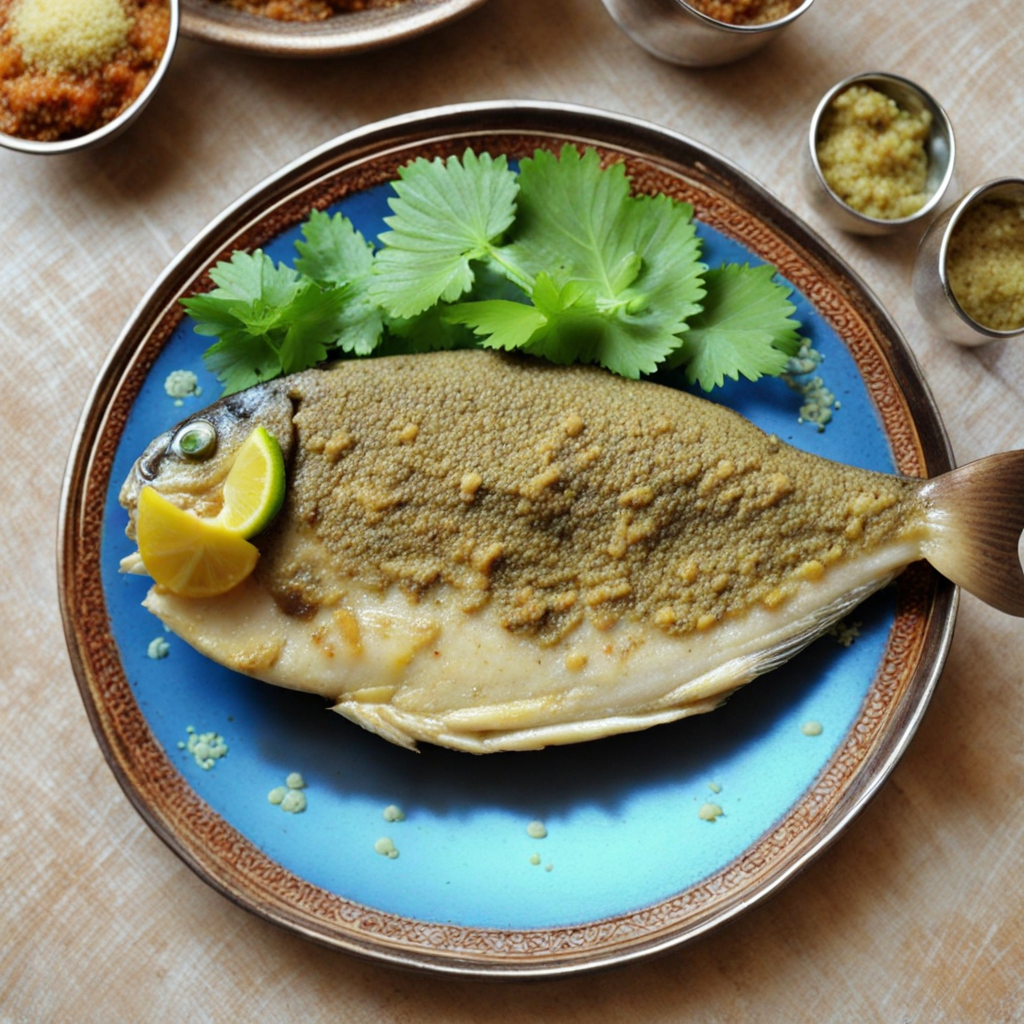Fuchka
Fuchka, a beloved street food from Bangladesh, offers a delightful explosion of flavors and textures that transports you to the bustling markets of Dhaka. This iconic snack consists of hollow, crispy puris made from semolina or wheat flour, which are expertly fried to achieve a golden-brown color and an irresistible crunch. Each puri is filled with a spicy and tangy mixture of tamarind water, mashed potatoes, chickpeas, and an array of aromatic spices, creating a perfect balance of savory and zesty notes. The moment you take a bite, the puri shatters, releasing the vibrant filling that dances on your palate, making it an unforgettable experience for first-time tasters. The magic of Fuchka lies not only in its flavors but also in its presentation. Vendors often serve it in a small, disposable bowl or on a banana leaf, accompanied by additional tamarind sauce and chopped onions for added texture and flavor. The process of eating Fuchka is just as thrilling as its taste; the puris are often dipped into the tangy liquid before being devoured, ensuring that each bite is packed with an explosion of taste. The combination of the crispy exterior and the flavorful interior creates a delightful contrast that makes Fuchka a favorite among food enthusiasts. Fuchka is more than just a snack; it embodies the spirit of communal eating and the vibrant street food culture of Bangladesh. It’s a dish meant to be shared with friends and family while enjoying the lively atmosphere of street vendors, where laughter and conversation flow as freely as the tamarind water. Whether enjoyed as an appetizer or a quick bite on the go, Fuchka offers a tantalizing journey into the heart of Bangladeshi cuisine, making it a must-try for anyone looking to expand their culinary horizons.
How It Became This Dish
The Enchanting Journey of Fuchka: A Culinary Gem of Bangladesh #### Origins Fuchka, known as "pani puri" in India and "golgappa" in various northern regions, is a beloved street food that has transcended borders and time, becoming a staple in Bangladeshi cuisine. The dish consists of hollow, crispy puris filled with a tantalizing mixture of spiced potatoes, chickpeas, and tamarind water. The origins of fuchka can be traced back to the Indian subcontinent, with roots that intertwine through the histories of various regions. The precise timeline of fuchka's emergence is a subject of debate among food historians. Some suggest that the concept of filling dough with flavorful ingredients has ancient origins, dating back to the 5th century BCE. Historical texts reveal that the use of chickpeas and spices was prevalent in the culinary practices of ancient Bengal, which laid the groundwork for what would eventually evolve into the fuchka we relish today. #### Cultural Significance Fuchka is more than just a snack; it is an integral part of Bangladeshi culture and social life. Street vendors, often referred to as "fuchkawalas," can be found in bustling markets, busy streets, and near educational institutions, where they serve this delectable treat to eager patrons. The act of enjoying fuchka is often a communal experience, where friends and family gather to share stories and laughter over plates of these addictive morsels. Culturally, fuchka has become synonymous with celebration and festivity. It is a common sight at weddings, family gatherings, and public events, where it serves as a beloved appetizer. The dish transcends social classes, appealing to both the affluent and the economically disadvantaged. Its affordability and accessibility make it a quintessential street food that captures the essence of Bangladeshi culinary identity. #### Development Over Time As time progressed, fuchka underwent various transformations, adapting to regional tastes and preferences. The traditional preparation of fuchka involves the use of ingredients like mashed potatoes, boiled chickpeas, finely chopped onions, and a blend of spices, creating a flavorful filling. However, modern interpretations have introduced a myriad of variations, including the use of sweetened yogurt, boiled mung beans, and an assortment of chutneys, each adding a unique twist to the classic recipe. In Bangladesh, the taste of fuchka is characterized by its piquant tamarind water, which is a crucial component that distinguishes it from its counterparts in India. The tamarind water is often spiced with roasted cumin, black salt, and a hint of chili, crafting a flavor profile that is both tangy and spicy. This distinctive seasoning has become a hallmark of the Bangladeshi fuchka experience, making it a favorite among locals and visitors alike. The preparation methods have also evolved over the years. In urban areas, fuchka is often served in hygienic, pre-packaged forms, catering to the growing concern for health and sanitation. However, the traditional street-side preparation remains popular, with fuchkawalas employing their time-honored techniques that have been passed down through generations. This balance between modernity and tradition reflects the dynamic nature of Bangladeshi cuisine. #### Regional Variations and Global Influence The appeal of fuchka has not been confined to the borders of Bangladesh; it has traveled across the globe, finding a place in the hearts of food lovers in various countries. In the diaspora, Bangladeshi communities have brought fuchka into local culinary scenes, adapting it to suit regional tastes while preserving its core essence. This global proliferation underscores the dish's versatility and universal appeal. Within Bangladesh itself, regional variations of fuchka are notable. For instance, in Dhaka, fuchka is often served with a more pronounced tanginess, while in Chittagong, it may incorporate a seafood twist, reflecting the coastal city's rich marine resources. Each region's interpretation of fuchka highlights the diverse culinary landscape of Bangladesh, where local ingredients and tastes shape beloved dishes. #### Fuchka in Contemporary Culture As we move further into the 21st century, fuchka continues to hold a significant place in both traditional and contemporary Bangladeshi culture. Social media has played a pivotal role in popularizing street food, with food bloggers and influencers sharing their fuchka experiences. This digital presence has encouraged a younger generation to explore the dish, fostering a renewed interest in traditional street food culture. Additionally, the rise of food festivals and culinary events has further elevated fuchka's status. Chefs and food enthusiasts experiment with innovative presentations and flavor combinations, pushing the boundaries of this beloved snack. From gourmet fuchka with fusion fillings to elaborate tasting menus that highlight its versatility, the dish remains a canvas for creativity. Moreover, fuchka has found its way into mainstream restaurants, where it is often featured as an appetizer or a part of tasting menus. This elevation of street food reflects a broader appreciation for traditional dishes and a recognition of their cultural significance. As more people embrace fuchka, its status as a culinary icon continues to grow, bridging the gap between traditional street food and fine dining. #### Conclusion Fuchka is more than just a culinary delight; it embodies the rich cultural tapestry of Bangladesh. Its origins, deeply rooted in history, have blossomed into a symbol of togetherness, celebration, and innovation. The evolution of fuchka, from humble street food to a global sensation, highlights the resilience and adaptability of Bangladeshi cuisine. As we savor each crisp bite of fuchka, we partake in a shared history that connects generations and transcends borders. This beloved snack is not just a treat for the palate but a testament to the enduring spirit of culinary tradition—a true gem of Bangladesh that continues to enchant food lovers around the world. Whether enjoyed from a bustling street vendor or a refined restaurant, fuchka remains a celebration of flavor, culture, and community.
You may like
Discover local flavors from Bangladesh


